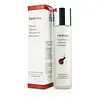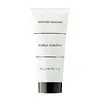What's inside
What's inside
 Key Ingredients
Key Ingredients

No key ingredients
 Benefits
Benefits

 Concerns
Concerns

 Ingredients Side-by-side
Ingredients Side-by-side

Water
Skin ConditioningParaffinum Liquidum
EmollientGlycerin
HumectantCaprylic/Capric Triglyceride
MaskingPolysorbate 60
EmulsifyingGlyceryl Stearate
EmollientVitis Vinifera Seed Oil
EmollientCetyl Alcohol
EmollientSnail Secretion Filtrate
Skin ConditioningChrysanthemum Indicum Callus Culture Extract
AntioxidantSorbitan Sesquioleate
EmulsifyingStearic Acid
CleansingDimethicone
EmollientCetearyl Alcohol
EmollientPhenoxyethanol
PreservativePanthenol
Skin ConditioningBetaine
HumectantSodium Hyaluronate
HumectantCarbomer
Emulsion StabilisingCitrus Aurantium Bergamia Fruit Oil
MaskingAllantoin
Skin ConditioningMyristyl Alcohol
EmollientCellulose Gum
Emulsion StabilisingDisodium EDTA
1,2-Hexanediol
Skin ConditioningParfum
MaskingWater, Paraffinum Liquidum, Glycerin, Caprylic/Capric Triglyceride, Polysorbate 60, Glyceryl Stearate, Vitis Vinifera Seed Oil, Cetyl Alcohol, Snail Secretion Filtrate, Chrysanthemum Indicum Callus Culture Extract, Sorbitan Sesquioleate, Stearic Acid, Dimethicone, Cetearyl Alcohol, Phenoxyethanol, Panthenol, Betaine, Sodium Hyaluronate, Carbomer, Citrus Aurantium Bergamia Fruit Oil, Allantoin, Myristyl Alcohol, Cellulose Gum, Disodium EDTA, 1,2-Hexanediol, Parfum
Water
Skin ConditioningParaffinum Liquidum
EmollientPropylene Glycol
HumectantAcetylated Lanolin
EmollientCetyl Alcohol
EmollientMyristyl Lactate
EmollientMyristyl Alcohol
EmollientLaneth-16
EmulsifyingCeteth-16
EmulsifyingOleth-16
EmulsifyingSteareth-16
CleansingLanolin Alcohol
EmollientGlyceryl Stearate
EmollientCarbomer
Emulsion StabilisingPEG-75
HumectantStearic Acid
CleansingSodium Hydroxide
BufferingPhenoxyethanol
PreservativeDiazolidinyl Urea
PreservativeParfum
MaskingIngredients Explained
These ingredients are found in both products.
Ingredients higher up in an ingredient list are typically present in a larger amount.
Carbomer is a polymer of acrylic acid. Its main role is to create a gel consistency.
A high amount of carbomer can cause pilling or balling up of products. Don't worry, most products contain 1% or less of carbomer.
Cetyl Alcohol is a fatty alcohol. Fatty Alcohols are most often used as an emollient or to thicken a product.
Its main roles are:
Though it has "alcohol" in the name, it is not related to denatured alcohol or ethyl alcohol.
The FDA allows products labeled "alcohol-free" to have fatty alcohols.
Learn more about Cetyl AlcoholGlyceryl Stearate is a mix of glycerin and stearic acid.
It is used to stabilize the mixing of water and oil ingredients. By preventing these ingredients from separating, it can help elongate shelf life. It can also help thicken the product's texture.
As an emollient, it helps soften skin and supports barrier-replenishing ingredients.
In cosmetics, Glyceryl Stearate is often made from vegetable oils or synthetically produced.
This ingredient may not be fungal-acne safe
Fun fact: The human body also creates Glyceryl Stearate naturally.
Learn more about Glyceryl StearateMyristyl Alcohol is type of fatty alcohol. It is a white, waxy solid and insoluble in water.
As an emollient, it hydrates the skin by trapping moisture in.
Fatty Alcohols are most often used as an emollient or to thicken a product. They are usually derived from natural fats and oils and therefore do not have the same drying or irritating effect as solvent alcohols.
Learn more about Myristyl AlcoholParaffinum Liquidum is also known as liquid paraffin. It is a type of highly refined mineral oil.
Like other oils, Paraffinum Liquidum has emollient properties. Emollients help soothe and soften the skin. By creating a barrier to trap moisture within, emollients help keep your skin hydrated.
Paraffinum Liquidum does not irritate the skin and is non-comedogenic.
Learn more about Paraffinum LiquidumParfum is a catch-all term for an ingredient or more that is used to give a scent to products.
Also called "fragrance", this ingredient can be a blend of hundreds of chemicals or plant oils. This means every product with "fragrance" or "parfum" in the ingredients list is a different mixture.
For instance, Habanolide is a proprietary trade name for a specific aroma chemical. When used as a fragrance ingredient in cosmetics, most aroma chemicals fall under the broad labeling category of “FRAGRANCE” or “PARFUM” according to EU and US regulations.
The term 'parfum' or 'fragrance' is not regulated in many countries. In many cases, it is up to the brand to define this term.
For instance, many brands choose to label themselves as "fragrance-free" because they are not using synthetic fragrances. However, their products may still contain ingredients such as essential oils that are considered a fragrance by INCI standards.
One example is Calendula flower extract. Calendula is an essential oil that still imparts a scent or 'fragrance'.
Depending on the blend, the ingredients in the mixture can cause allergies and sensitivities on the skin. Some ingredients that are known EU allergens include linalool and citronellol.
Parfum can also be used to mask or cover an unpleasant scent.
The bottom line is: not all fragrances/parfum/ingredients are created equally. If you are worried about fragrances, we recommend taking a closer look at an ingredient. And of course, we always recommend speaking with a professional.
Learn more about ParfumPhenoxyethanol is a preservative that has germicide, antimicrobial, and aromatic properties. Studies show that phenoxyethanol can prevent microbial growth. By itself, it has a scent that is similar to that of a rose.
It's often used in formulations along with Caprylyl Glycol to preserve the shelf life of products.
Stearic Acid is a fatty acid. It is an emollient, emulsifier, and texture enhancer.
As an emollient, stearic acid helps soften skin. It aids the skin's protective barrier by preventing water loss. It also provides a gentle cleansing effect without stripping away natural oils.
Stearic acid may also be used to enhance the texture of products. It can add volume and stabilize ingredients such as water and oil. This can help water and oil ingredients from separating.
Sources of stearic acid include animal or vegetable fats/oils such as coconut or shea. It can be naturally found in butter, cocoa butter, shea butter, vegetable fats, and animal tallow.
This ingredient may not be Malassezia folliculitis, or fungal-acne safe.
Learn more about Stearic AcidWater. It's the most common cosmetic ingredient of all. You'll usually see it at the top of ingredient lists, meaning that it makes up the largest part of the product.
So why is it so popular? Water most often acts as a solvent - this means that it helps dissolve other ingredients into the formulation.
You'll also recognize water as that liquid we all need to stay alive. If you see this, drink a glass of water. Stay hydrated!
Learn more about Water